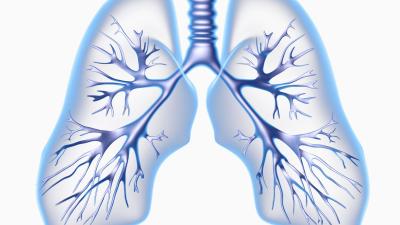Flailing at COVID-19: Same Song, Third Verse

When the first reports of a virus infecting people in Wuhan, China, appeared in late 2019, it was difficult to predict the related significance and danger.
In rapid fashion, the unbridled spread of this highly transmissible and potentially lethal virus has changed the way the world lives.
Efforts to control the spread of the causative virus (SARS-CoV-2) have ramped up quickly. Very tight movement and travel restrictions are in place in greatly affected nations such as China and Italy, and similar restrictions are being achieved gradually in many other nations, including the United States.
Despite all current efforts, COVID-19 continues to spread and kill. With no available treatments or vaccines, scientists and governments have leaped into the fray. Facing a fast and dangerous disease, how are we addressing treatments and, most importantly, the development of a vaccine? Currently, the scientific research community is focused on the same approach used for the two previous 21st century coronaviruses, despite never succeeding with this approach before. But when your only tool is a hammer, every problem looks like a nail.
The new coronavirus is designated SARS-CoV-2 because it is similar to SARS-CoV-1, the original Severe Acute Respiratory Syndrome (SARS) coronavirus that appeared in 2002. Much of the new research uses materials and models from the unsuccessful SARS-CoV-1 animal research endeavor and the later unsuccessful animal testing in response to the Middle East Respiratory Syndrome (MERS) coronavirus, including reestablishing mouse lines and repurposing drugs that failed for those two diseases.
In the process, we have learned that, just as with the original SARS and MERS research, mice lack the specific receptor that permits SARS-CoV-2 virus to transport into cells, and thus this research is a dead end. Testing in ferrets, marmosets, African green monkeys, and other mammals has also thus far failed to find a suitable “model” for COVID-19. Now new mouse models are being created, and baboons are being tested at the Texas Biomedical Research Institute.
Even after decades of animal research, most severe infectious diseases still have no vaccines. The age-old truisms are again emerging in the SARS-CoV-2 vaccine and drug research: Many animals are not susceptible to the virus, some clear the virus quickly without consequence, others have no illness when infected, symptoms are typically different from those in humans, immune responses may or may not impact disease immunity, treatments have no translation to humans, and vaccines fail despite conforming to accepted immune system interactions. Furthermore, humans who are most affected by this dangerous disease have other risk factors that are impossible to replicate in animals in the laboratory.
Again the admonition from George Santayana is validated: “Those who cannot remember the past are condemned to repeat it.” Scientists refer to this translation barrier as the Valley of Death, with good reason.
And though researchers, funding agencies, and regulators continue to preach the necessity for preclinical animal testing, the COVID-19 pandemic has led to the initiation of clinical trials without evidence from preclinical animal studies for a new type of synthetic mRNA vaccine. If the vaccine works in humans, it contradicts the current status quo that animal tests are required to protect human patients.
So what should we be doing? Because there has been no sustained major investment in developing human-specific research approaches for uncommon or transient infectious diseases, there is nothing shelf-ready to use for patients and others at risk. And because scientists did not pursue the lessons of the SARS and MERS failed animal testing as those infections faded, there has been no bounty preparing science for a more human-specific research approach.
A very promising research area involves boosting the effectiveness of immune cells either through selective propagation or genetic engineering. Immune cell propagation involves collecting infection-fighting immune cells from patients, followed by culturing the cells and encouraging them to reproduce and then reintroducing these cells back into the patient. More recently, it has been possible to use gene editing techniques to modify immune cell receptors to have greater affinity for specific invader cell antigens―for example, the spiked cell surface receptors of the SARS-CoV-2 virus. Used primarily to develop cancer treatments, the same principles apply to treating infectious diseases. Viral specimens from patients can be used to assess the effectiveness of such methods, thus bypassing the Valley of Death inherent in animal research. And efficacy is determined quickly in clinical trials, shortening the time to effective therapies.
The U.S. National Toxicology Program maintains a reference document for validated and investigational nonanimal methods to assess drug and vaccine safety and potency. Its agencies NICEATM and ICCVAM conduct workshops to update and promote established and new nonanimal development methods, designed to make drug and vaccine testing more human-relevant. Just as important in the current pandemic environment, progress in these areas would allow scientists to learn and improve regarding the development of vaccines and drugs to prevent, treat, and cure future global infectious diseases.
Currently our unpreparedness is exposed by yet a third attempt to address the deadly 21st century coronaviruses SARS, MERS, and COVID-19 by animal testing. To improve our current response and prepare for future pandemics, we must cease being subject to the observation derived from Commodore Oliver Hazard Perry by the wise Pogo: “We have met the enemy, and they are us.”
John Pippin, MD, FACC, is the director of academic affairs for the Physicians Committee. He works to replace the use of animals in medical and drug research, medical education, and the training of physicians, nurses, and other medical professionals. He has testified before the U.S. Food and Drug Administration and the Institute of Medicine on how misleading animal experiment results contributed to the approval of Vioxx and other dangerous drugs.







